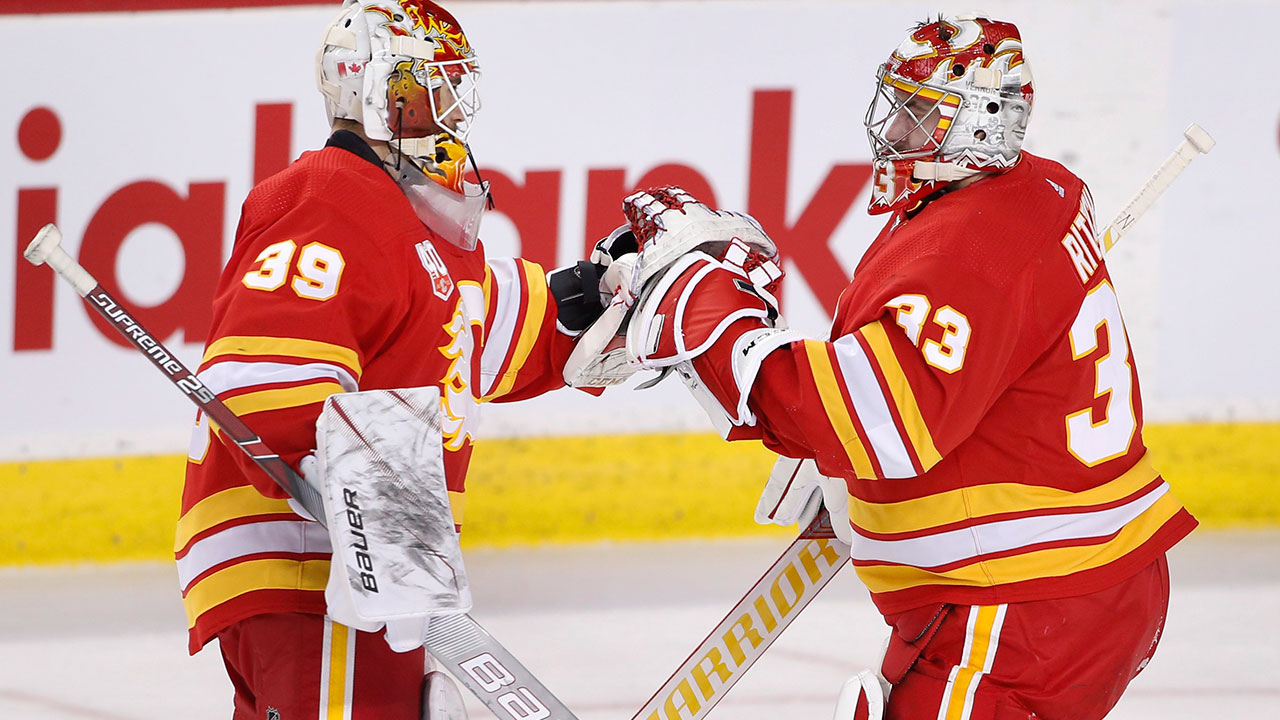It would be putting it mildly to say the Calgary Flames have had an inconsistent season. They’re the only NHL team right now in a playoff position with a negative goal differential (not including shootout goals), but even that doesn’t quite do justice to how weird their season has been.
The Flames have allowed 10 more goals than they’ve scored and that poor goal differential ranks all the way down at 24th in the league. That’s not to say they’re the 24th-best team, but it does illustrate how all over the place they’ve been.
Earlier in the season the Flames were a shell of the team we saw last year, when they were one of the best in the league during the regular season. But a November coaching change driven by unacceptable behaviour rather than performance helped to bring some of the magic back anyway.
Despite their skaters seeing a big positive step in the right direction, the Flames haven’t really captured that momentum and reaped the reward of their offence scoring the fifth-most goals per game of any team in 2020. Goaltending has been one of the issues, which has necessitated a bit of a change in deployment.
Using five-game rolling averages in order to smooth out performance and eliminate crazy single-game variability a little bit, let’s take a look at how David Rittich and Cam Talbot have performed this season over time.

At about the mid-point of the season, the Flames started turning to Talbot more often, and after that Rittich’s play dropped off in a relatively extreme way. What’s interesting is that Rittich’s drop off to being below league average (where the x-axis is set) didn’t begin before the team started relying on Talbot more — and as Rittich has really started to struggle, the team has actually started going to Talbot less often.
Brought in to be a steady backup in case Rittich faltered, Talbot has been very strong down the stretch after being a little inconsistent to start the season. If Rittich keeps struggling it wouldn’t be surprising if the Flames turned to Talbot when the playoffs come around, but going from backup to starter duty is not the easiest transition in the world, and raw save percentage in all situations can leave a lot to be desired in evaluating performance.
So the question is, are the Flames actually better off turning to Talbot than they are sticking with Rittich and riding it out? Let’s look at the more detailed 5-on-5 data to see some more descriptive and predictive performance indicators.

Breaking things down by zone, it’s clear that Talbot has been far more efficient at stopping pucks from the inner slot area, where Rittich has struggled the most compared to his peers. But Talbot’s also been better from the high slot, where both Flames goaltenders have been below league average.
From the perimeter, neither goaltender is giving up more than their fair share of weak goals, stopping pucks at a 97.7 and 98 per cent rate from the outside, which is above the league average of 97.3 per cent.
From the save percentages alone, it would seem Talbot is the better option for right now because he’s been stopping pucks at a higher rate from the more important areas in the game state that is most predictive of future performance. However, there’s one more area we can’t ignore: frequency.
How often a goaltender is challenged to make a difficult save is a big factor in how often they’re able to make those saves, so are the Flames giving Talbot an easier time by either playing better in front of him or facing lesser teams?
Per 60 minutes played at 5-on-5, Talbot is indeed facing fewer shots on net from the inner slot than Rittich, but only by a negligible amount. Rittich faces 6.11 inner slot shots per 60 minutes, while Talbot faces 5.99, and Talbot actually faces slightly more shots from the high slot. Talbot faces 7.81 shots on net from the high slot every 60 minutes, while Rittich faces 6.99. That’s less than one shot per 60 minutes, but it shows that Rittich hasn’t had a rougher ride.
Extending out to look at passing, we find that Talbot faces 12.5 slot passes every 60 minutes, while Rittich faces 11.6, so once again Talbot is actually dealing with a slightly tougher workload.
The amount of time Rittich has played this season might be the biggest external factor in all of this, as he’s started far more games than Talbot has. At the very least it doesn’t appear that the Flames would be hurt by giving Talbot more chances down the stretch. He may even steal the job entirely.
And he’ll start Wednesday at home against Columbus.
[relatedlinks]








